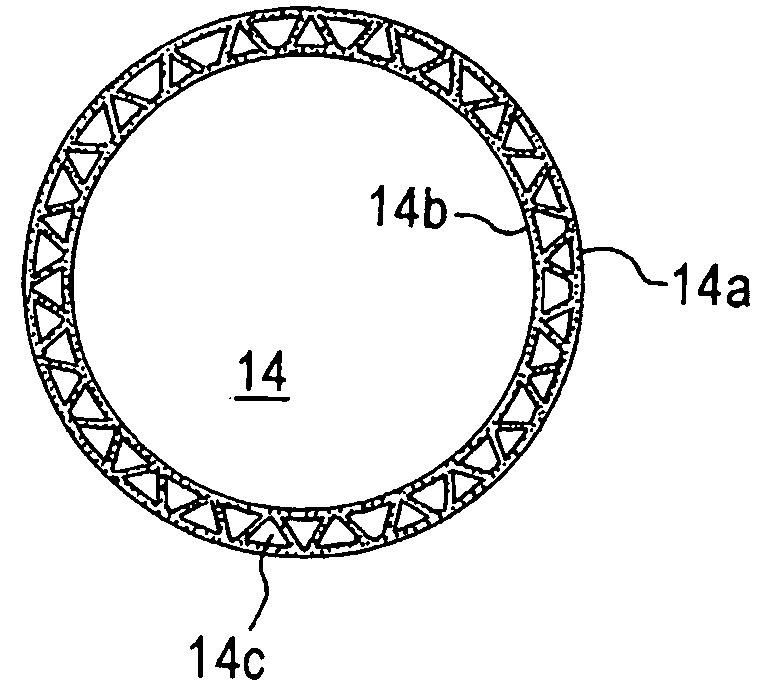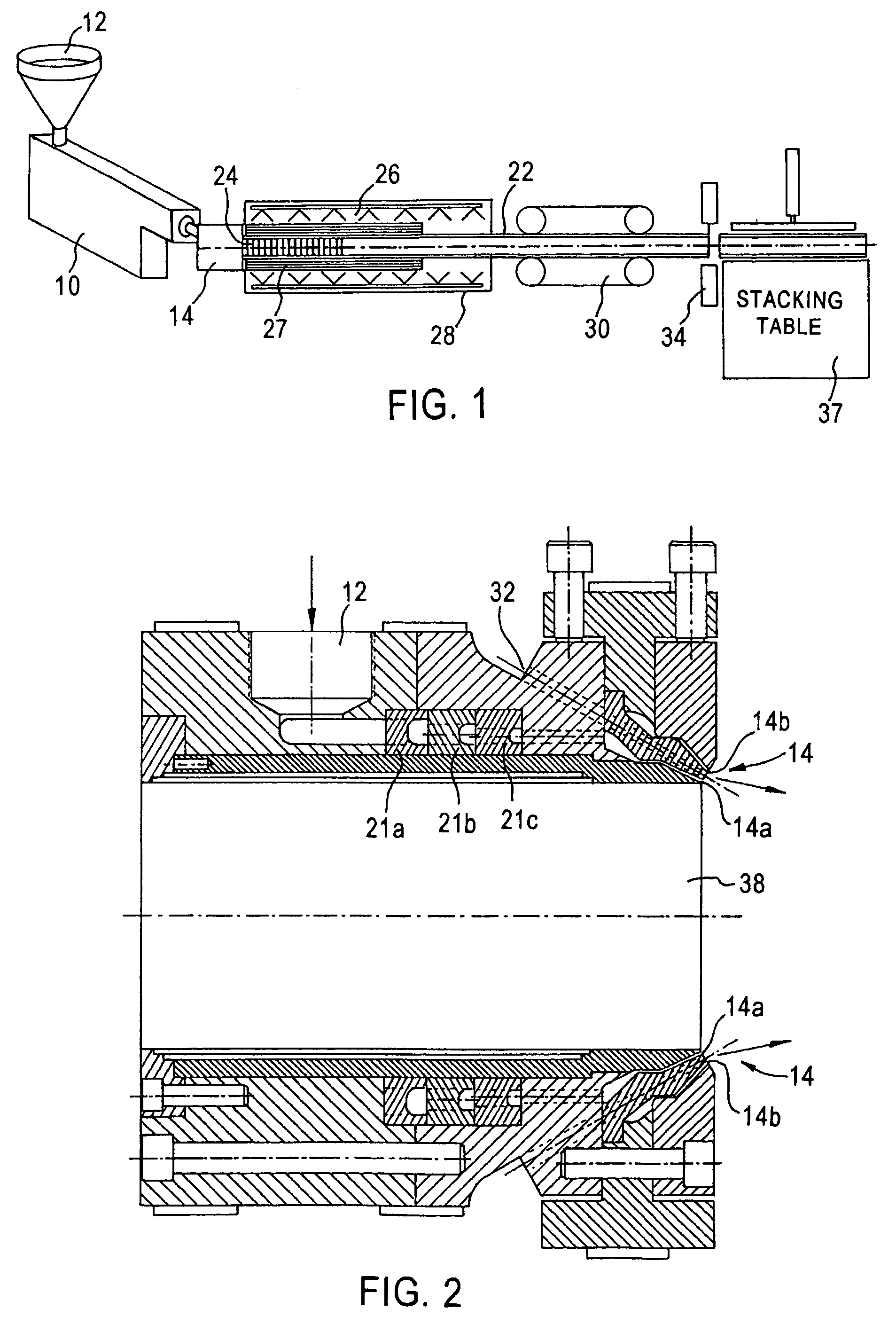Method for producing a helically shaped, seamless multi-walled cylindrical article
a multi-walled cylindrical, seamless technology, applied in the direction of pipes, filament/thread forming, textiles and papermaking, etc., can solve the problems of wound materials, insufficient crushing strength to withstand higher inwardly directed forces, and increased crushing stress on the core, so as to smooth out possible imperfections.
- Summary
- Abstract
- Description
- Claims
- Application Information
AI Technical Summary
Benefits of technology
Problems solved by technology
Method used
Image
Examples
Embodiment Construction
[0065]Referring now to FIGS. 1, 2, 3 and 7a, an extruder 10 is fed with a suitable material, such as a plastic resin, 12. The resin is melted in the extruder and passed through an extrusion die 14 of suitable configuration to form an extrudate 22 of appropriate size and shape. The extrudate 22 is a complex structure that is made up of an inner tubular element 16, an outer tubular element 18 and a plurality of struts 20a and 20b (see FIG. 7a) that are preferably, but not necessarily, angularly disposed. The extrudate structure 22 is passed through a vacuum chamber 28 in which it is pulled over a sizing sleeve and cooling drum 24 while being passed through an external coolant, such as a water spray, 26. Upon cooling and solidification, the extrudate product 22 is then pulled away from the cooling step and longitudinally twisted by a puller / twister 30 (see FIGS. 6, 8a, 8b, 9a, 9b, 13, and 14) such that the rib members assume a configuration that has a circumferential as well as a longi...
PUM
| Property | Measurement | Unit |
|---|---|---|
| diameter | aaaaa | aaaaa |
| angle | aaaaa | aaaaa |
| helical angle | aaaaa | aaaaa |
Abstract
Description
Claims
Application Information
 Login to View More
Login to View More - R&D
- Intellectual Property
- Life Sciences
- Materials
- Tech Scout
- Unparalleled Data Quality
- Higher Quality Content
- 60% Fewer Hallucinations
Browse by: Latest US Patents, China's latest patents, Technical Efficacy Thesaurus, Application Domain, Technology Topic, Popular Technical Reports.
© 2025 PatSnap. All rights reserved.Legal|Privacy policy|Modern Slavery Act Transparency Statement|Sitemap|About US| Contact US: help@patsnap.com



